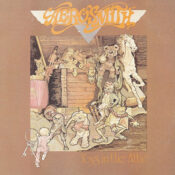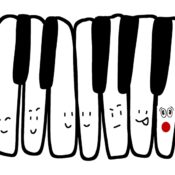When it comes to composing movie scores, John Williams is the unchallenged master: Jaws, Star Wars, Indiana Jones, Harry Potter, Superman, Schindler’s List, Jurassic Park, and on and on. Few can match his ability to raise the emotional level of an onscreen story by levels of magnitude, but none can rival his success at it. He has the statuettes to prove it, too: He has won 26 Grammy Awards (out of 76 nominations), 5 Oscars (54 nominations — only Walt Disney has more Oscar noms), 4 Golden Globes (27 noms) and even 3 Emmys (6 noms). And in 2022, he, along with former Disney CEO Robert Iger, was knighted by Queen Elizabeth II “for services to film music”; they were the last two people to be so honored before the Queen’s death.
But while Williams’s silver-screen work has elevated experiences in movie theaters, his works for concert halls haven’t gotten the exposure they deserve. His standalone musical work is every bit as exciting, uplifting, and heart-breaking, only without moving images to go along with it.
Here are six of his best.
Concerto for Tuba and Orchestra (1985)
Those who know the tuba only as an accompanying “oompah” instrument will be surprised by how versatile it can be in the hands of a skilled player. And Williams’s three-movement concerto puts that versatility on beautiful display.
Commissioned for the 100th anniversary of the Boston Pops Orchestra, the tuba concerto is more approachable to the casual listener than, say, his bassoon concerto (more on that later). If you only know his movie music, this still sounds like a John Williams composition. Though it’s meant for the concert hall, you can easily imagine it — or at least parts of it — as a movie score.
In fact, tuba soloist Simon Wildman said of the piece, “I’ve always thought this concerto was like a long Superman etude. The writing really seems to suggest flying, action punches, and soul-searching at the Fortress of Solitude.” (If you listen carefully, you can even hear fragments of the Superman theme in the first movement.)
Concerto for Tuba and Orchestra, featuring Hans Nickel and the WDR Symphony Orchestra (Uploaded to YouTube by WDR Klassik)
Song for World Peace (1985)
When Seiji Ozawa, music director of the Boston Symphony Orchestra, was preparing to take the group on a tour of Pacific Rim nations in 1985, he asked Williams to write something the BSO could perform in Japan (where Ozawa was born) and China. The result was Song for World Peace. The title might sound high-minded or even corny, but consider the context: People around the world were marking the 40th anniversary of the end of World War II, and this piece would be performed in Japan by an American orchestra led by a Japanese-American conductor.
Though it opens with a strong statement from a solo horn, the orchestration relies more heavily on woodwinds and strings, creating a warm, rich sound. Over the course of the composition, a repeating theme is passed around the orchestra (in a way reminiscent of music from Close Encounters of the Third Kind), building all the while. The brass reenter with the theme toward the end, and the piece builds to a joyous, hopeful ending.
Song for World Peace as recorded by the Recording Arts Orchestra of Los Angeles (Uploaded to YouTube by John Williams – Topic)
Five Sacred Trees (Bassoon Concerto) (1995)
This isn’t your traditional concerto. To begin with, a standard concerto consists of three movements — a fast one, a slow one, and a faster one — and Five Sacred Trees comprises five movements. And whereas your Classical concerto usually begins with a thematic statement by the orchestra, this one starts with just the unaccompanied bassoon.
John Williams venerated the forest. In the liner notes for a recording of the concerto, Williams wrote, “Within the tree community, there lies more music than anywhere else in the Western world. It is impossible to stand under the high arching boughs of ancient trees and not wonder if the architecture of cathedrals was not born of just such an experience.”
The “Five Sacred Trees” referenced in this piece are from Irish and Celtic mythology, as depicted in the poetry of Robert Graves. The first movement, depicting Eó Mugna “The Great Oak,” was inspired by the Uilleann pipes, the national bagpipes of Ireland, which is easy to hear in the quick, flickering grace notes that separate the longer melodic tones in the opening phrases. This is followed by Tortan, an ash whose association with witches is depicted by a spritely, dance-like exchange between the bassoon and the violin. Eó Rossa “The Tree of Ross,” depicted in the third movement, is a symbol of destruction and re-creation, reflected in the music as a solemn and contemplative duet between the harp and bassoon.
The fourth movement takes off. Craeb Uisnig (the Celtic name for the ash tree) is a symbol and source of strife in the ancient stories. This movement depicts a ghostly battle, and you can even hear the snapping of twigs underfoot. Lastly comes the tree Dathi, said to be the muse of poets and the last tree felled in the legendary forest of Celtic mythology; against a background of harmonization that is at once eerie, dark, and uplifting, the music ponders the secrets of the trees, culminating in a duet between flute and bassoon.
Normally, we expect a concerto to end with a flurry of notes and a wall of sound, a final burst of human bravado to punctuate the piece with a string of musical exclamation points. But this isn’t about the triumph of humankind; it’s about the trees, and trees don’t shout. This concerto ends softly, fading like a forest in fog, a quiet mystery.
Theo Plath performs “Five Sacred Trees” with the Frankfurt Radio Symphony (Uploaded to YouTube by the Frankfurt Radio Symphony)
Famed conductor Leonard Slatkin said of Five Sacred Trees, “It’s the finest work for that instrument and orchestra that I can think of.”
For New York (1988)
This piece was originally called To Lenny! To Lenny! because it was written to mark the 70th birthday of Williams’s friend and colleague Leonard Bernstein, and in fact it comprises variations on themes by Leonard Bernstein. It’s only three minutes long, and while you’re listening for quotations from Bernstein’s On the Town and West Side Story, listen too for echoes of the “Happy Birthday” song.
For New York (Variations on Themes of Leonard Bernstein), performed by the Recording Arts Orchestra of Los Angeles (Uploaded to YouTube by John Williams – Topic)
If, like me, you laughed out loud when “Happy Birthday” magically appeared, I bet you’ll love Williams’s Happy Birthday Variations.
Air and Simple Gifts (2009)
This piece is as notable for who performed its premiere as for its composer. Air and Simple Gifts was commissioned for Barack Obama’s 2009 presidential inauguration and was premiered at that ceremony with Itzhak Perlman on violin, Yo-Yo Ma on cello, Anthony McGill on clarinet, and Gabriella Montero on piano.
The piece begins fairly simply (as befits the title) but then grows in complexity, testing and displaying the skills of its performers as the well-known Shaker hymn “Simple Gifts” unravels into something more intricate and exciting.
Air and Simple Gifts was commissioned for Barack Obama’s 2009 inauguration (Uploaded to YouTube by Yo-Yo Ma)
The performance of Air and Simple Gifts at the inauguration caused a bit of controversy after it was revealed that, while the quartet was actually playing, their sound that afternoon was unamplified. What was broadcast to the gathered crowds and the TV audience was a recording they had made a couple days earlier.
To anyone who has ever played an instrument outdoors, this is a forgivable sin: The extreme temperatures — it was below freezing and breezy that day — made it impossible to stay in tune and, with frozen fingers, difficult to play. They didn’t bring out their best instruments, either: The low temperature combined with the complete lack of humidity meant there was a risk of the wood cracking during the performance — not something you’d want to put a Stradivarius through.
Music for Brass (2014)
Commissioned by the National Brass Ensemble — a group of 26 musicians from nine of the top U.S. orchestras — Music for Brass is a tour de force. (Don’t be misled by the title: There are some percussion parts in there, too.) From the start, it’s an exciting, playful, pointillistic piece. It begins quickly enough, but then — with the exception of an almost cartoonish (in the best possible way) tuba feature — picks up more and more steam, and doesn’t really settle down until the final note.
The National Brass Ensemble performs Music for Brass (Uploaded to YouTube by Release – Topic)
Williams has long been a fan of the brass section. “Because of the breadth of their exposure to so many musical genres — classical, jazz, big band ensemble, military and brass band tradition, pop, rock ’n’ roll, and on and on,” he says, “our American brass players are the most versatile and finest in the world. … Music for Brass is offered as a humble tribute to their wizardry. The piece attempts to spotlight, separately and together, the diverse groups forming the ensemble — trumpets, horns, trombones, and tubas.”
The most avid of John Williams’s fans undoubtedly have their own favorite concert-hall pieces. Let us know in the comments what other of his compositions music lovers won’t want to miss.
Become a Saturday Evening Post member and enjoy unlimited access. Subscribe now




Comments
Great music. Enjoy it.
I have loved John William’s film and concert music for ages! Thanks for this!